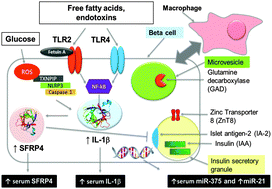microRNAs with different functions and roles in disease development and as potential biomarkers of diabetes: progress and challenges
Abstract
Biomarkers provide information on early detection of diseases, in determining individuals at risk of developing complications or subtyping individuals for disease phenotypes. In addition, biomarkers may lead to better treatment strategies, personalized therapy, and improved outcome. A major gap in the field of biomarker development is that we have not identified appropriate (minimally invasive, life-style independent and informative) biomarkers for the underlying disease process(es) that can be measured in readily accessible samples (e.g. serum, plasma, blood, urine). miRNAs function as regulators in wide ranging cellular and physiological functions and also participate in many physiopathological processes and thus have been linked to many diseases including diabetes, metabolic and cardiovascular diseases, cancer, neurodegenerative diseases, and autoimmunity. Many miRNAs have been shown to have predictive value as potential biomarkers in a variety of diseases including diabetes, which are detectable in some instances many years before the manifestation of disease. Although some technical challenges still remain, due to their availability in the circulation, relative stability, and ease of detection; miRNAs have emerged as a promising new class of biomarkers to provide information on early detection of disease, monitoring disease progression, in determining individual’s risk of developing complications or subtyping individuals for disease phenotypes, and to monitor response to therapeutic interventions. As a final note, most of the miRNAs reported in the literature have not yet been validated in sufficiently powered and longitudinal studies for specificity for that particular disease.


 Please wait while we load your content...
Please wait while we load your content...